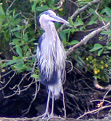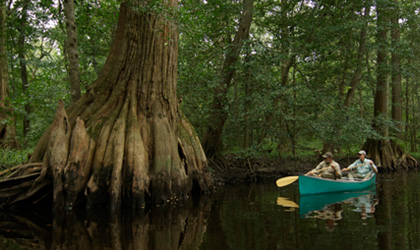The Nanticoke River is the largest Chesapeake Bay tributary on the lower Delmarva Peninsula, meandering gently through marshland, forests, and farmland on its 64 mile journey from southern Delaware to Tangier Sound in Maryland.
The Nanticoke watershed encompasses approximately 530,000 acres– including over 50,000 acres of tidal wetlands– which represent about one-third of all the tidal wetlands in the State of Maryland. The watershed is also the most biologically diverse watershed on the Delmarva and is home to the highest concentration of bald eagles in the northeastern United States. Navigable beyond Seaford, Delaware, the river has played an important role in commerce and trade throughout its history, providing a critical water route for early Native American tribes and later for European settlers.
The Nanticoke River offers excellent opportunities for paddlers to explore its history and beauty, and to catch a glimpse of the wildlife that call it home. Please browse this site to find out more about paddling the Nanticoke River.
Wildlife on the Nanticoke River

The diversity of forests, fields and shallow marshes provides suitable habitat for a number of rare, threatened, or endangered plant and animal species. The Nanticoke River Watershed harbors more rare plants than any other landscape on the Delmarva Peninsula.
Follow Captain John Smith’s Explorations

Captain John Smith conducted two major voyages around the Chesapeake Bay during the summers of 1607 and 1608, both starting from Jamestown, Virginia.
On his first voyage he traveled north along the Eastern Shore of Maryland, exploring the mouth of the Pocomoke River and then traveling some distance up the Nanticoke River.
Local Environments
Despite the historic importance of the Nanticoke watershed, and the adjacent Fishing Bay watershed, for Native Americans and European settlers, the area remains largely undeveloped. It is this rural landscape and the unique cultural heritage of the area as an agricultural community that has enabled the river to remain as clean and healthy as it is. Using the river as your highway, you can explore all of the natural habitats and current land uses that the watershed has to offer. In many places, the landscape is so pristine that it can provide a glimpse into how things may have looked to Capt. John Smith as he explored the region during the early 17th century.


